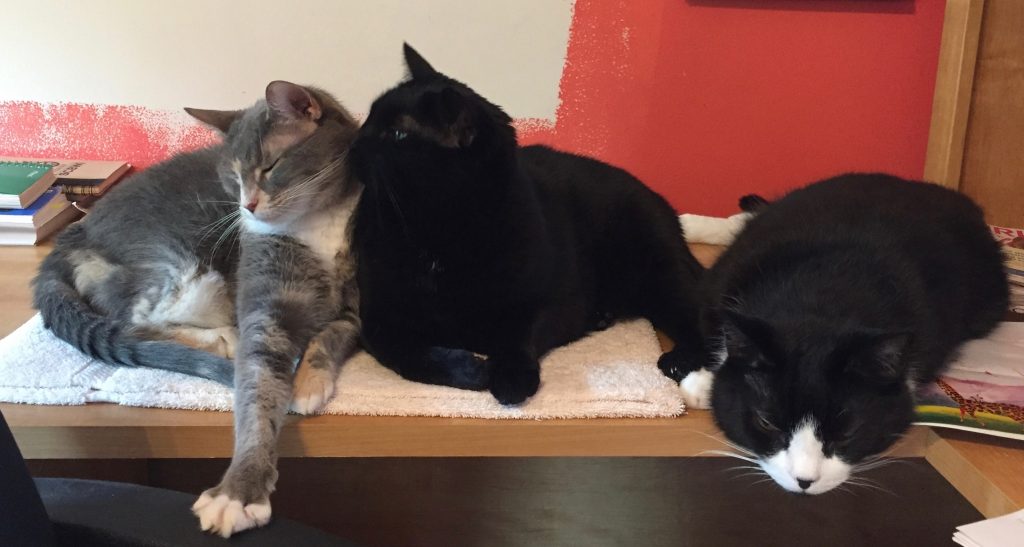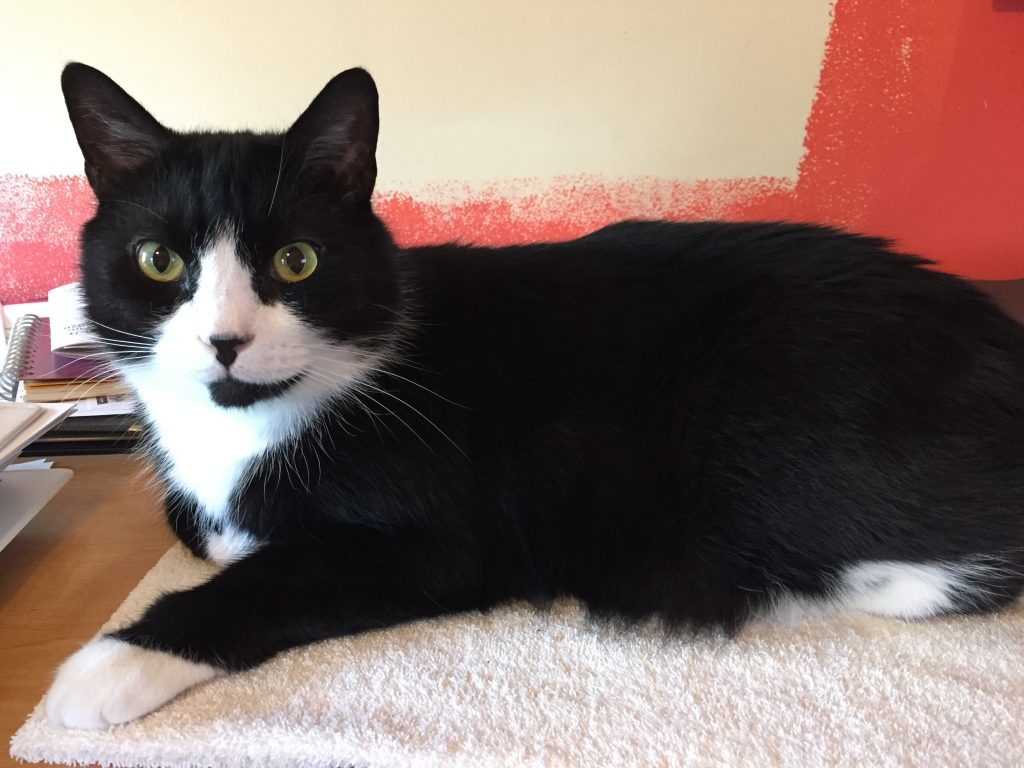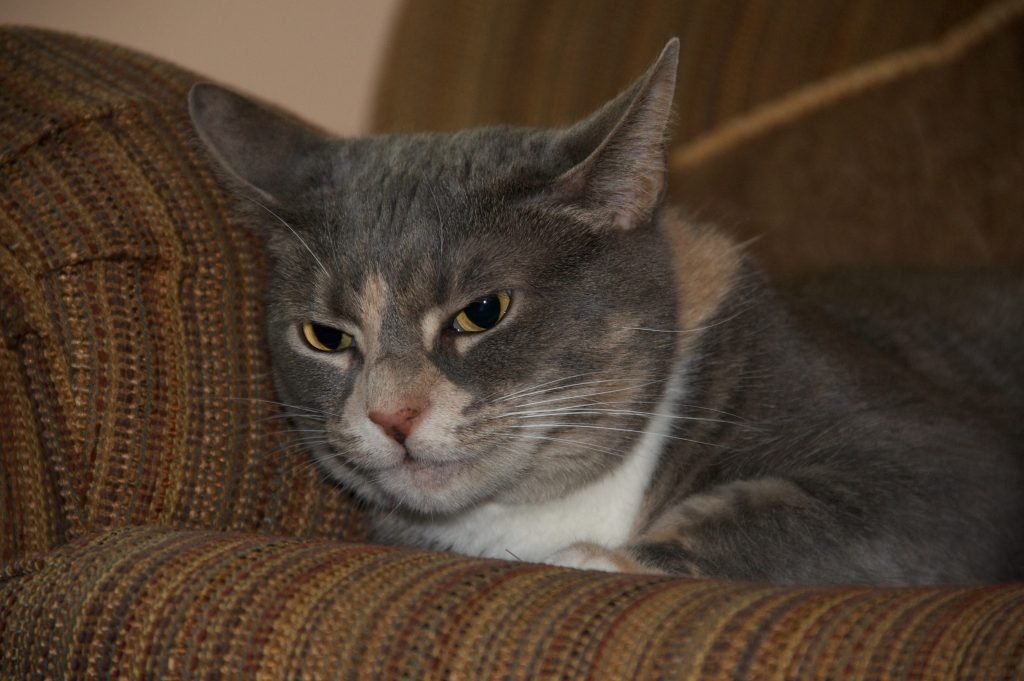A recent scientific study has shown that cats recognize their names, they just prefer to ignore us when we call them.
As a lifelong cat owner, I say, “Well, duh.”

Aloofness Is an Art
Atsuko Saito of Sophia University in Tokyo and her team of researchers observed 78 cats listening to recordings of people reciting a list of five words. The cats living in private homes heard recordings of their owners’ voices, while cats living in cat cafés heard other people reading. The first four words were similar to the cat’s name. The final word was the cat’s name.
The team measured the cats’ reactions, including ear twitches, head movements, and tail swishing. The cats usually perked up at the sound of the first word, then lost interest. (Sounds familiar.) Finally, when the person said the cat’s name, the cats visibly responded, although fewer than 10 percent actually got up and moved toward the sound. (Also familiar.)
Some people choose to look on such findings as evidence that cats are less intelligent than dogs. Not true, say the scientists. “Cats are just as good as dogs at learning,” says John Bradshaw, a biologist at the University of Bristol who was not involved in Saito’s study. “They’re just not as keen to show their owners what they’ve learned.”
To be fair to our feline friends, dogs also have a 20,000-year head start. And unlike dogs, cats have not been domesticated to obey humans’ orders.
Some researchers believe that cats’ dismissive attitudes are a product of their evolutionary history over the past 9,000 years. In true cat fashion, it seems that the long-ago ancestors of today’s cats actually took the initiative in human–cat interactions. As early societies developed agriculture, cats moved in to prey on the rodents infesting grain supplies. Soon, the cats chose to live closer to humans, effectively domesticating themselves.
Communication Is a Two-Way Street
Until a decade or two ago, pet cats spent most of their time outside, coming indoors only at night or in bad weather. Now that more cats spend more of their lives indoors, they are developing a better ability to read and respond to human cues.
Personally, I think we humans need to take some of the initiative to learn cat language.
Anyone who lives with cats soon realizes that they use a combination of vocalizations, body language, and scent to communicate. The closer we pay attention to our cats, the better we will become at communicating with them and understanding them. Here are a few cues to get you started. Learn more about understanding your cat here and here.
Vocalizations
People always think of the meow as the basis of cat vocabulary. In fact, although domestic cats often meow at humans, adult cats normally don’t meow at each other. Some scientists think that cats see their owners as kittens, because generally only mother cats and their kittens communicate through meowing.
Kind of puts us in our place, doesn’t it?

Mother cats also give chirps and trills when they want their kittens to follow them. If your cats chirp at you, they probably want you to follow them. If your cats are like my cat Guinness, they probably want you to follow them to the food bowl so you can refill it.
Purring is usually a sign of contentment, although I’ve recently learned that cats sometimes purr when they are anxious. That explains why all my cats purr when they are at the vet’s office!
If you want to stay on your cat’s good side, leave him or her alone when he or she is growling, hissing. or spitting. This vocalization means he or she is annoyed, frightened, or angry. Save the cuddles or grooming for another time.
Body Language: Tail
Also stay away when your cat looks like the classic Halloween cat: arched back, fluffed fur, and upright “bottle-brush” tail. In fact, one of the best ways to gauge your cat’s mood is by looking at its tail.
Cats hold their tails up when they want to be approached. If they are thumping or swishing their tails, you need to keep your distance. If the cat curls its tail around your legs, it signals friendliness. But a cat with its tail tucked below or between the legs is afraid or anxious.
Body Language: Eyes
Philosophers tell us the eyes are the window to a person’s soul. It’s much the same with cats. Wide-open eyes show trust, while eyes narrowed to slits signal fear or aggression.
When a cat greets another cat or a person with slow blinks, it’s communicating affection. Why? Because in the feline world, closing one’s eyes in the presence of another is the ultimate sign of trust.
So if you want to say I love you to your cat, try blinking slowly and see if your cat blinks back.

Body Language: Ears
Most of us know to keep our distance from a cat with a swishing tail, but flattened or back-facing ears also communicate anger and distrust.
Scent
Few things feel more heartwarming than having your cats rub their chins and bodies against yours. That’s the ultimate expression of— Sorry. The answer is not affection. They’re actually marking us as part of their territory. You have noticed they also do this to walls, doors, furniture, and toys, right? But don’t forget those shared eye blinks. They do love us, too.
Finally, I just learned about something called the Flehmen response. Have you ever noticed your cats curling back their lips after they sniff you? Don’t take it personally. They’re actually gathering information.
Cats have an extra olfactory organ call Jacobson’s organ. It’s located on the roof of the mouth behind the front teeth, and it’s connected to the nasal cavity.
When your cats smell something really fascinating, they open their mouth and inhale so that the scent molecules flow over the Jacobson’s organ. This intensifies the odor and provides more information about the object the cats are sniffing.
That’s only the tip of the iceberg for cat communications. Learn more by checking out this fascinating e-book called the Cat Language Bible.
Charles Dickens once wrote, “What greater gift than the love of a cat?” I could not agree more. We just need to do our part to be worthy of that love.